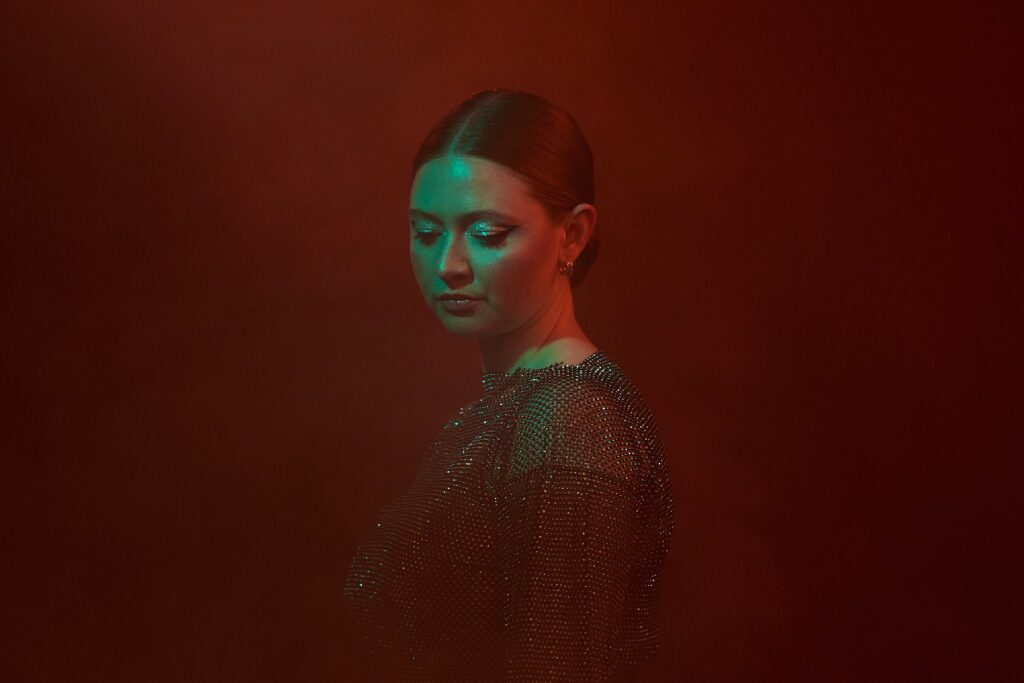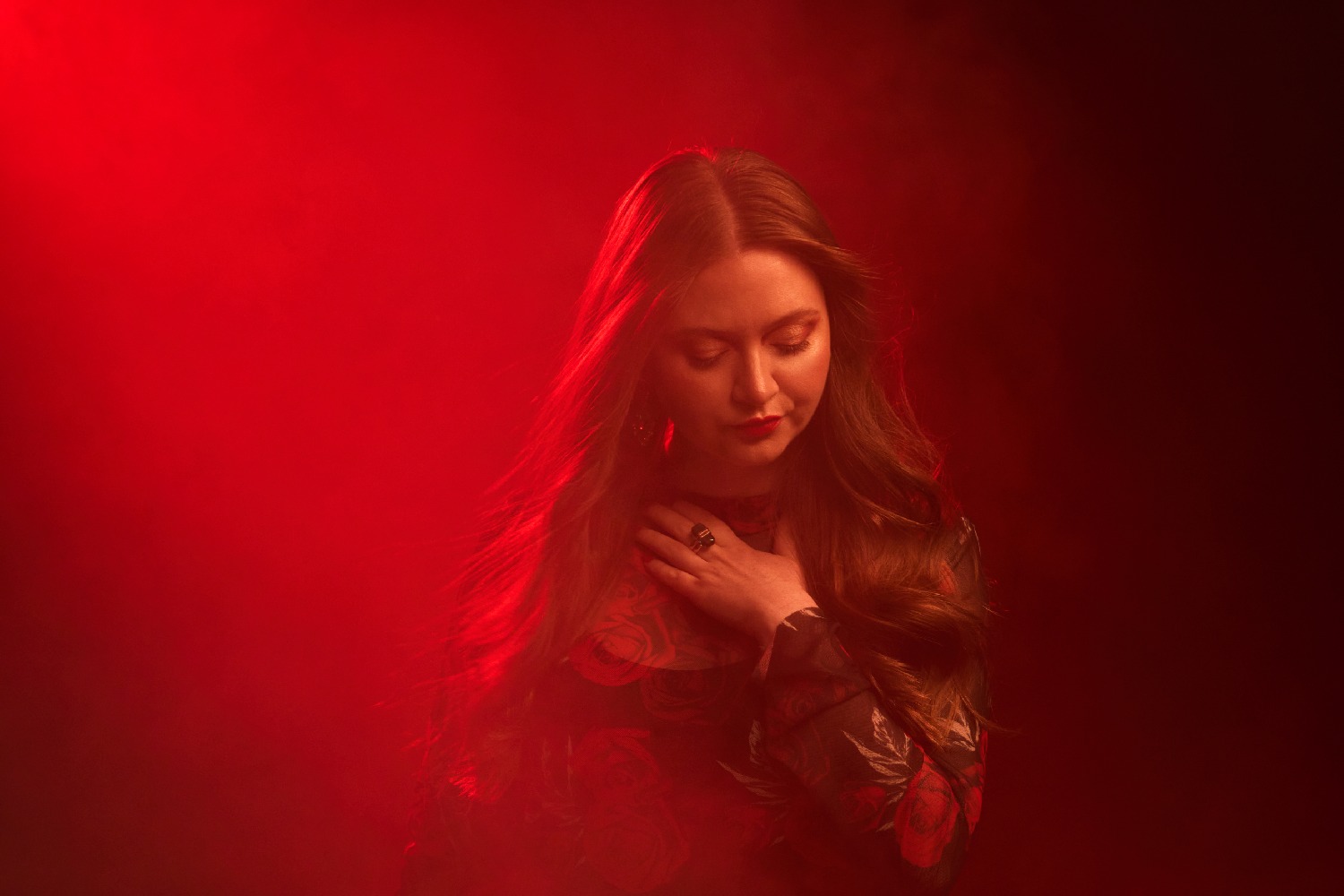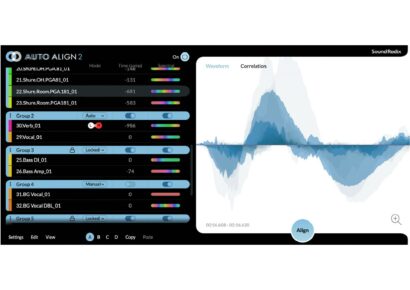It's not often these days that an album works as a such a cohesive, complete body of work, but here comes Audrey Powne's debut album: From the Fire.
Audrey Powne is forging her own path. With classical training behind her, she has a strong vision for whatever task is ahead, leading her as she navigates producing, playing, composing and being a session musician. Her new record, From the Fire, is out this week and we caught up with Audrey about her creative process!
Audrey, thanks for taking the time and congrats on the release of From The Fire! We understand you’re a bit of a multi-instrumentalist, how do you define yourself?
I’ve been a professional trumpet player for over a decade now and funnily enough trumpet is kind of my day job and how I pay my bills. I’ve been so lucky to play with so many incredible artists and bands as a trumpeter and I’m so grateful for the places, literally all over the world [that] my trumpet has taken me. In terms of myself as an artist though I identify more holistically especially with the release of this album. I really love producing/composing and arranging and hope to work more in that space on my own and other people’s music into the future.
Audrey Powne
How and where did writing for From the Fire begin?
I started writing From the Fire during the pandemic. I had been living in New York from 2018-March 2020 and suddenly went from living in Harlem in the biggest city in the world, [working as] a professional musician, to living with my mum in her spare room a block away from where I went to high school.
Read all the latest features, columns and more here.
I had also quite recently been through a traumatic event whilst living in NYC and was still very much in the aftermath of that. I was obsessively watching the news in Melbourne as I think we all were, and a story came on about the beginning of regeneration and regrowth of native trees quite literally from the ashes of the devastating bushfires of 2019. I became obsessed with this idea of rebirth and rejuvenation and through the cathartic writing of this album I feel I was able to somewhat manifest my own rebirth, healing and regeneration into a new season of my life. I’ve never written anything so deeply personal.
And more specifically, how did you write the album?
I write everything initially on the piano or keyboard without any other technology. Usually for me it always starts with harmony and chords/sounds I like before fitting them into a groove/time signature. I then will usually make a demo to show my band before the session, (using samples, mostly kits I’ve assembled myself from previous live sessions, I use an incredible plug in called XO to build kits and edit drum sounds) and these days I basically always use Logic or very occasionally Pro Tools. I also write detailed charts for all my tunes. I come from a classical/jazz background and I really value my education and musical literacy, being able to write charts is just a great way to communicate making rehearsal and sessions easier and smoother and saving a lot of time. For this record I also demo’d all the strings. I started in Logic using the Abbey Road Strings sample pack which I love using and then charted and edited in Sibelius ready for the session with the quartet. I find pre-production really important, the more you can do before a session the better in my experience to get the most out of the amazing musicians I’m lucky to play with. As a session musician myself I know the frustration of a disorganised session and I don’t want to inflict that on other musicians whose time and energy I value.
Sing Sing Studios
Why did you choose Sing Sing Studios in Melbourne?
I had a relationship with Box Hill institute where I ended up teaching for a few years. Before I started teaching there I was part of an incredible program where I mentored groups of students as part of the “Creative Cup” where each group completed a song in one week, mixed and mastered. I loved being there with the students and watching them go through the entire process of producing a song which helped me to reflect on and develop my own processes. In lieu of payment for this mentoring, the institute rewarded me with studio time, four days in the excellent studio which was invaluable for me at the time, to have that much time and space in such a big studio. With my incredible engineer, Russell Fawcus, who I sought out knowing he had previously worked extensively at the old, legendary Sing Sing Studios in Melbourne we embarked on some epic set ups, especially on the drums. We really made the most of the size of the room capturing a lot of room sound as well as close mic-ing everything.
How do you feel as a producer of your own record?
Honestly being able to say I composed and produced this record myself is one of the proudest achievements of my life. To be honest, gender was a huge factor in my decision to self-produce. Production is still an incredibly male-dominated space in the music industry, and I find that if you don’t explicitly specify the technical things you do on your own records as a female artist, there is more often than not an assumption that it was a man or there is some genius male producer behind the scenes. I knew I had the knowledge and ability to produce my own record as a highly-trained musician and I’m glad I challenged myself to do so. It was also an incredible feeling to maintain complete creative control, this record really is my vision. I hope the production on the record stands to demonstrate my abilities in this area as I loved doing it so much, my new goal is to work with other artists, hopefully younger female artists to empower them in this space to move towards producing their own music and gaining more technical knowledge of the record making process.

What challenges did you have producing your own album? Maybe some advice you can offer to people wanting to do the same?
I think knowing what you want it to sound like is really important. Having a strong idea of what you’re trying to achieve, conceptualising a sonic identity for your record is a really strong and I think important thing to do. I also really believe in research, both through listening to great sounding records and also reading and finding out about other people’s processes. For From the Fire I was really inspired and deeply studied my favourite album of all time What’s Going On by Marvin Gaye. I hesitate to mention my record in the same breath but I was inspired by the way this record transitions between tracks and really feels like one work with a strong sonic identity encompassing every track on the record. I utilised instrumental interludes (“Interlude 1”, “Interlude 2” and the “Overture”) to introduce and re-introduce instrumental themes and harmonic structures present in other tracks.
Compositionally I used the strings to introduce the melodic themes of the record. When recording the strings I did some research into how best to do this, we used a lot of room mics as well as close mic-ing and overdubbing the quartet multiple times to create the sense of a small string orchestra rather than a quartet. These techniques I discovered through my life long love of the Beatles and consistent fascination bordering on obsession with how they made their seminal records. That was a bit of a tangent haha basically do your research I guess and listen intensively to great records.
Thanks again for your time! As a closer, surely you’d have some stories about making From The Fire?
Well … we certainly did. There were lots of pandemic interruptions and whatnot but to end on a great story which is my favourite tidbit of the record haha …
I recorded Matt Keegan’s incredible Baritone Sax solo on “Souled Out”, the final track on the record while I was touring with Jimmy Barnes. We were both in the horn section for the 2022 Soul Deep national tour and I bought my Electro-Voice RE-20 (my favourite mic, also what I recorded all my vocals and trumpet on the record) and we recorded it backstage in a little dressing room. When I was editing in the stems in isolation I could hear the faint sounds, or screams haha of Jimmy warming up backstage in another room, Jimmy would often walk around backstage singing, warming up his iconic voice haha so buried deep, deep, deep in the background of the tune is a Jimmy Barnes Howl haha!
Keep up with Audrey here.







